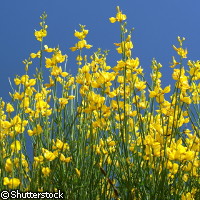Study highlights bioenergy's water footprint
Researchers and industry actors are on the bandwagon to find alternative sources of energy, for example by replacing petrol with biofuels. The spotlight is now on the water footprint - the volume of fresh water used to produce goods and services for consumption. New research from the Netherlands assesses the water footprint of bioenergy - the amount of water needed to cultivate crops for biomass. The study's findings are published in the Proceedings of the National Academy of Sciences (PNAS) Early Edition. Building on two earlier studies that estimated the water footprint of food and fibre products as well as the water footprint of heat from biomass, the researchers from the University of Twente set out to provide a global overview of the water footprint per unit of bioenergy such as electricity, bioethanol and heat. According to the researchers, despite the fact that the water footprint of bioenergy is much bigger than other forms of energy, more than twice the amount of water is saved with bioelectricity production versus biofuel generation. 'The water footprint of bioelectricity is smaller than that of biofuels because it is more efficient to use total biomass (e.g. for electricity or heat) than a fraction of the crop (its sugar, starch or oil content) for biofuel,' the research shows. The team successfully showed the water footprint for 13 crops (barley, cassava, maize, potato, rapeseed, rice, rye, sorghum, soybean, sugar beet, sugar cane and wheat; and jatropha, a suitable energy crop). These crops contribute 80% of the total global crop production. The study found that for bioelectricity, the most favourable crops are maize, sugar beet and sugar cane, while the least favourable are rapeseed and jatropha, which is 10 times less water efficient. For bioethanol, sugar beet and potato take top marks, with sugar cane rounding out the top three. Only 1,400 litres of water is needed to make 1 litre of bioethanol from sugar beet, the researchers said. The most disadvantageous crop is sorghum. For biodiesel, the best crops are soybean and rapeseed, while jatropha is the worst. The researchers said it takes around 14,000 litres of water to produce 1 litre of biodiesel from soya or rapeseed, against an average of 20,000 litres of water for 1 litre of biodiesel from jatropha. A total of four categories of biomass were included in this study: starch crops and tubers; sugar crops; oil crops; and trees. The researchers showed how the cultivation of crops affects water consumption. They determined that choosing the most favourable site for each crop is feasible when water consumption is linked to the location and climate data. Doing this keeps biomass cultivation in check; food production in areas that lack sufficient amounts of water are better protected, they said. 'If a shift toward a greater contribution of bioenergy to energy supply takes place, the results of this study can be used to select the crops and countries that produce bioenergy in the most water-efficient way,' the authors wrote. Developed by co-author Professor Arjen Hoekstra from the University's Department of Water Engineering & Managment, the water footprint could be used to determine how people should use the limited supplies of fresh water worldwide, the researchers stated. 'In the coming decades, humanity will face important challenges, not only to meet the basic human need for water, but also to ensure that extraction of water from rivers, streams, lakes and aquifers [underground bed or layer yielding ground water for wells and springs] does not affect freshwater ecosystems performing ecological functions,' the research showed. The authors cautioned: 'With a world population of 9.2 billion by 2050, as projected by the United Nations, there are reasons for concern over whether the food and fibre needs of future generations can be met in regions with limited water resources.'
Countries
Netherlands



